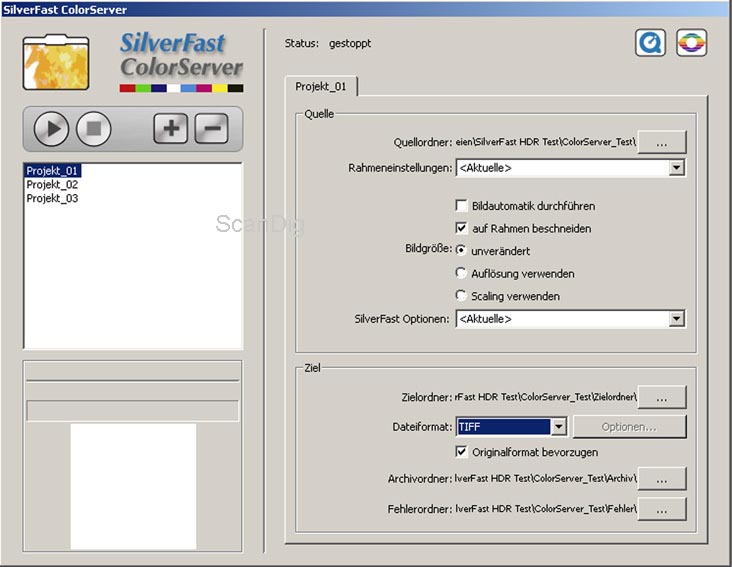
Mark’s E-Book provides production-quality workflows that incorporate SilverFast 8, SilverFast HDR, and Adobe’s Lightroom and Photoshop applications.” “……………, and fortunately, my friend and colleague Mark D Segal has recently published the definitive guide to scanning slides and prints with SilverFast. However, with his exhaustive – but never exhausting – exposition of SilverFast’s vast feature set, he reveals and clarifies areas of the application which I’ve either never used or never been comfortable with.” Where the author feels that SilverFast is not going to give you best results, he makes no excuse for providing alternative solutions in Photoshop and Lightroom. “Although the book was written in close collaboration with LaserSoft, makers of SilverFast (of itself a positive sign), it’s no hagiography. The title may be quite a mouthful, but it is justified through the contents. “Scanning veteran Mark D Segal has nevertheless confounded expectations with his eBook, “Scanning Workflows with Silverfast 8, Silverfast HDR, Adobe Photoshop Lightroom and Adobe Photoshop”. I am particularly impressed with the inclusion of the all the suggested alternate workflows involving various combinations of SF, SF HDR, Lightroom, and Photoshop.”
#SILVERFAST HDR SOFTWARE MANUAL#
…….The presentation and organization over the 380 pages is absolutely exemplary: this book is a model of what such a manual should be. “…it is with considerable excitement and pleasure that I have been working my way methodically through your newly-available comprehensive users’ manual, the SilverFast 8 Handbook, by Mark Segal. “If you scan with SilverFast you need this comprehensive e-book by Mark Segal.” Real customer comments received on this e-book from 2012 to the present (anonymized because we did not seek permission to associate names with text). While we have every reason to believe that most of the content remains both relevant and/or timeless, the price has been reduced from $39.95 to $29.95. That said, neither the author nor PhotoPXL assume any responsibility or liability for any differences between the contents of this book and the applications described therein.
#SILVERFAST HDR SOFTWARE SOFTWARE#
While this book is not up-to-date with the latest software versions, most of the material here remains usable and relevant. Furthermore, since the book was published Adobe has also upgraded versions of Lightroom and Photoshop. PLEASE NOTE: This book is most relevant to SilverFast 8, now replaced by SilverFast 9, a paid upgrade. Mark Segal and PhotoPXL are offering this very well-received, unique resource in light of on-going customer interest. This book was previously exclusive to the SilverFast website, however, LaserSoft Imaging has issued a new version of SilverFast and the owner of the company wrote his own book to accompany it in so doing, they discontinued this book on their website. It addresses in detail the perennial question of “What do I do Where”. It describes the use of SilverFast 8 and SilverFast HDR 8 either as stand-alone applications or used in carefully documented workflows including Adobe Photoshop or Adobe Photoshop Lightroom.

This book is for anyone seeking to learn efficient workflows for scanning film media and maximizing image quality from scanned media, whether positive transparencies or color/B&W negatives. To date, the only comprehensive resource of its kind, available for purchase on the PhotoPXL website: It looks to me that the HDR file format is not correctly interpreted by Photoshop, which means that the HDR file format is not a standard TIFF file.Description Scanning Workflows With SilverFast 8 – SilverFast HDR Why is there a difference between how Photoshop and Silverfast interpret the HDR files with embedded scanner profile? If I open these HDR images in Silverfast 8 Studio and convert the profile to the same Adobe RGB (1998), the images are noticeably lighter and much nearer to the actual image. If I open these HDR files in Photoshop (CS6) the image is fairly dark, even if I chose the option that Photoshop should color-manage the image and use the embedded profile and convert it to the working profile Adobe RGB (1998). My understanding is that the 48HDR file is in a standard, raw format with the Epson Scanner profile embedded and that it any color profile aware progrsm that can handle 16/bits per channel, should be able to read this file correctly. Images was scanned with Silverfast r19, while processing was done with r20. I have scanned a number of positive, reflective images with an Epson 4990 scanner and Silverfast 8, using 800dpi and 48bits HDR format in TIFF.


 0 kommentar(er)
0 kommentar(er)
